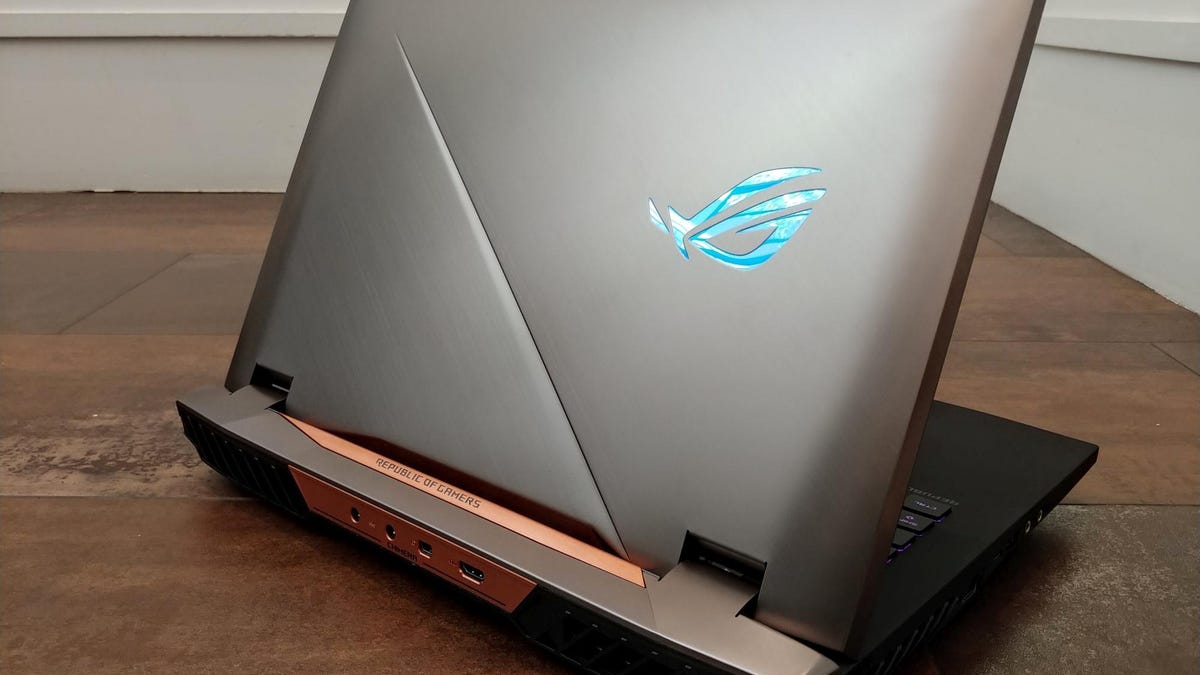Intel's new Core i9 chips could make laptops feel like desktops
Six cores. Twelve threads. Up to 4.8GHz when chilled. That's possible in a laptop now.

The Asus ROG G703 is one of the first laptops to sport Intel's Core i9 mobile processor.
Intel was stuck. In early 2017, the chipmaker's new seventh-gen laptop and desktop Kaby Lake processors were barely faster than the year before. "Don't be fooled," I wrote.
But this year, it looks like Intel's priciest new chips have gained some real ground. On Tuesday, the company is announcing its first six-core, 12-thread chips for laptops -- one of them a speed demon that can boost up to 4.8GHz when cooled below 53 degrees Celsius.
I'm talking about the new Intel Core i9-8950HK, the first Core i9 chip in a laptop, and one Intel claims is up to 29 percent faster at everyday tasks than one of last year's fastest laptop CPUs, the Core i7-7820HK. Intel also says it's 59 percent faster at 4K video editing than that chip (which is actually quite comparable: same base clockspeed, same voltage).
Lest you think Core i9 laptops will all be giant tanks, feast your eyes on this MSI GS65.
Intel's new Core i9 flagship even comes unlocked, so you can overclock it -- or better yet, leave it to the pros. Intel says it expects PC companies to ship preoverclocked 5GHz+ systems shortly after launch.
Naturally, not everyone will be able to afford a Core i9 processor. For the rest of us, the benefits of Intel's new 14nm Coffee Lake silicon will be felt most keenly in the company's Xeon and Core i7 processors, which also offer six cores and 12 threads for all your multitasking (and editing and rendering) needs.
In fact, "more cores" is something of a theme this year, whether we're talking laptop or desktop. Though the company's still maintaining its Core i7/Core i5/Core i3 designations, you get more cores for your money now. On the laptop side, you can expect four cores and eight threads, even in Intel's low-power U-series Core i5 chips. (That was the exception, not the rule, just last year.)
And on the desktop front, Intel's low-power Core i3 chips now have four cores, while the Core i5 have six. That's two more than each had previously.
Speaking of labels, if you see a "Core i5+" or "Core i7+" on your next computer, you should know it's not a new kind of chip -- it's merely marketing shorthand to indicate those PCs include an Intel Optane memory module to make their sluggish hard drives feel faster. (Even if you've got a fast SSD as your boot drive, Intel says Optane can drastically speed up wait times if you're loading media from a traditional spinning disk.)
According to Intel, there are no foolproof fixes for the Spectre and Meltdown flaws in these new chips -- though existing "mitigations" should come baked in to greatly lessen the risk.
And there's no built-in Thunderbolt 3 support yet. Manufacturers will still need to buy a separate Intel chip if they want to add the all-in-one cable that offers power, data, video and external graphics support all at the same time, which means it'll remain a luxury.
But you can expect the average Intel laptop's Wi-Fi performance to get better.
For one thing, its new 300-series mobile chipset will have built-in Intel 802.11ac wireless, which I've generally found more reliable than the competition. For another, that 802.11ac wireless is a new 160MHz variety, twice as fast as Intel's previous 80MHz option (assuming your router supports 160MHz as well). Theoretically, it can transfer well over a gigabit per second.
As always, we'll have to see if Intel's tech lives up to the claims when the laptops roll in.

